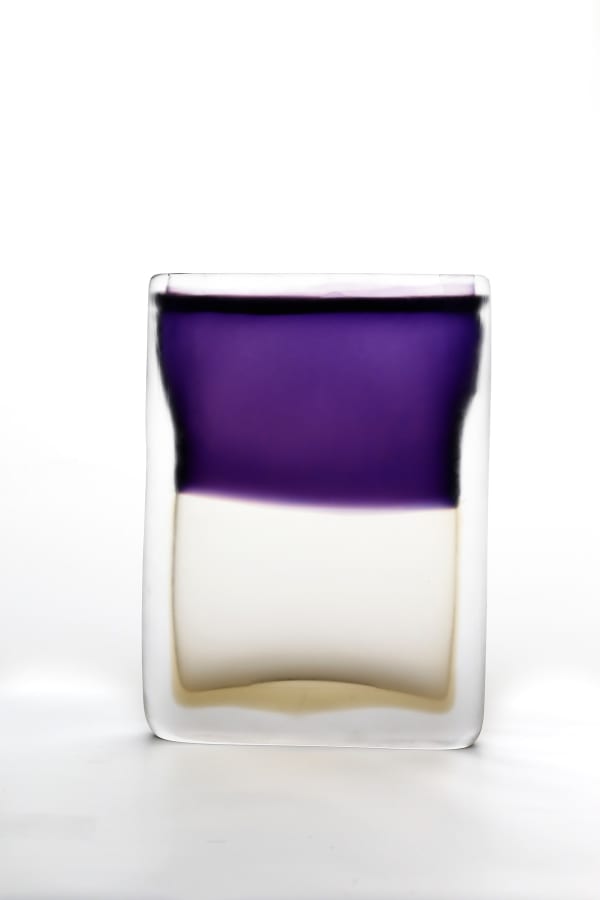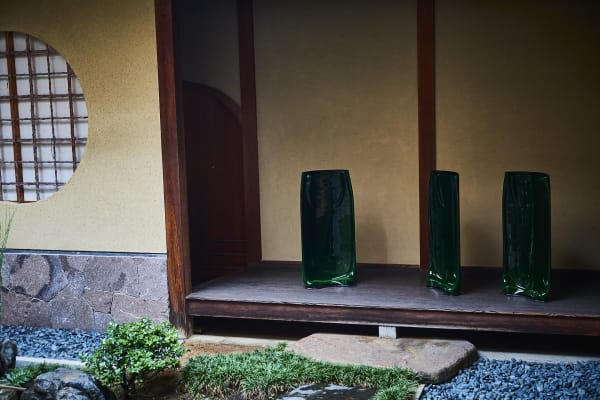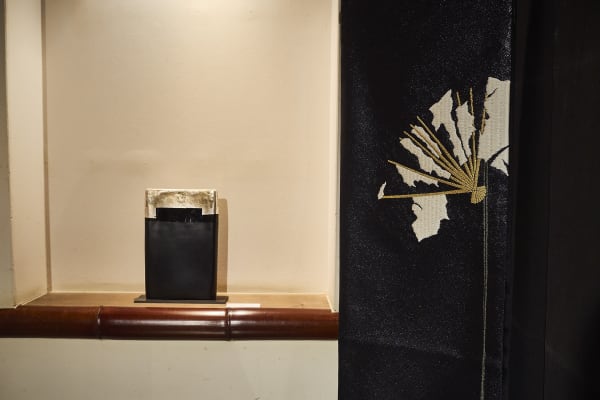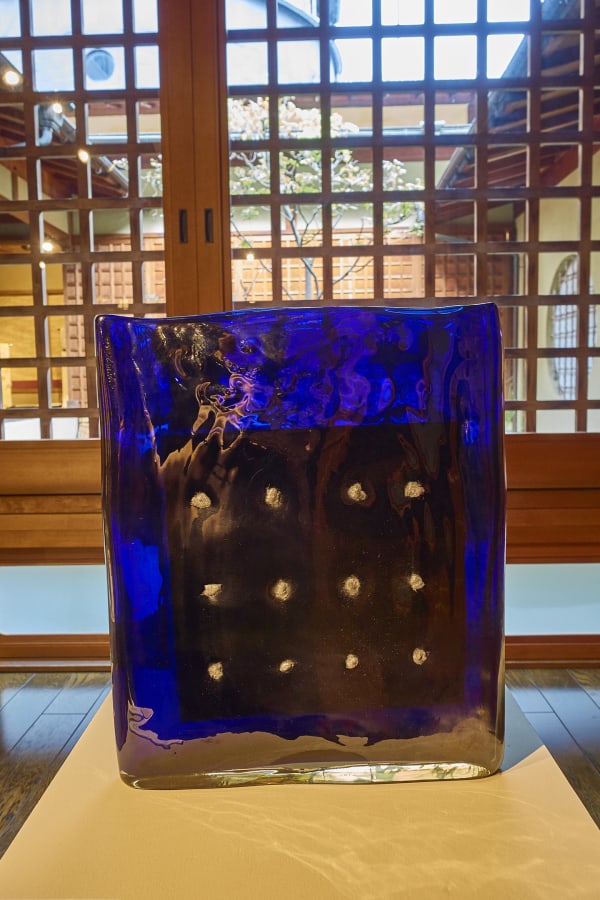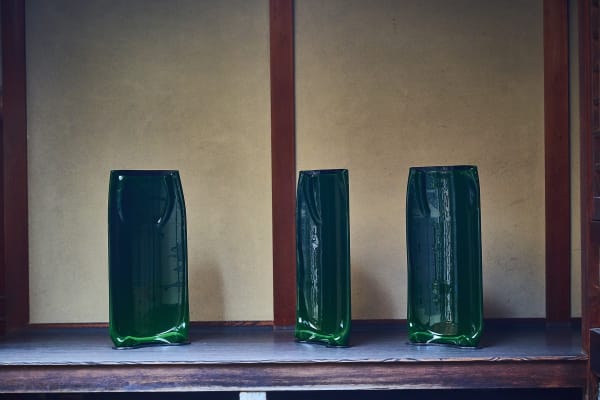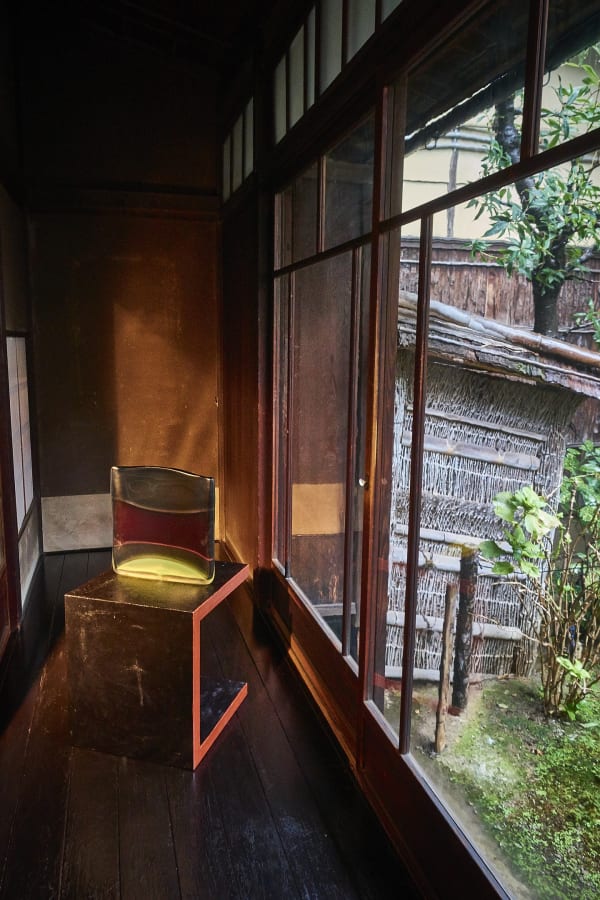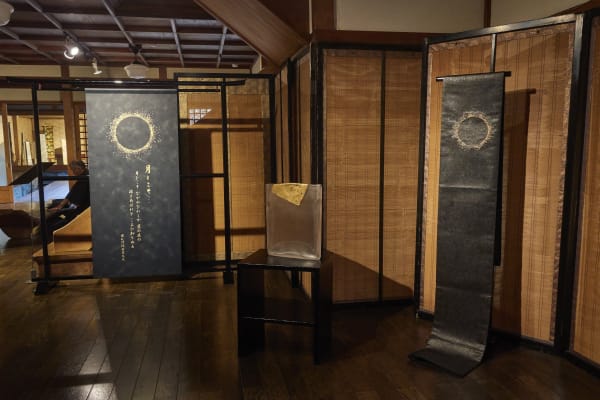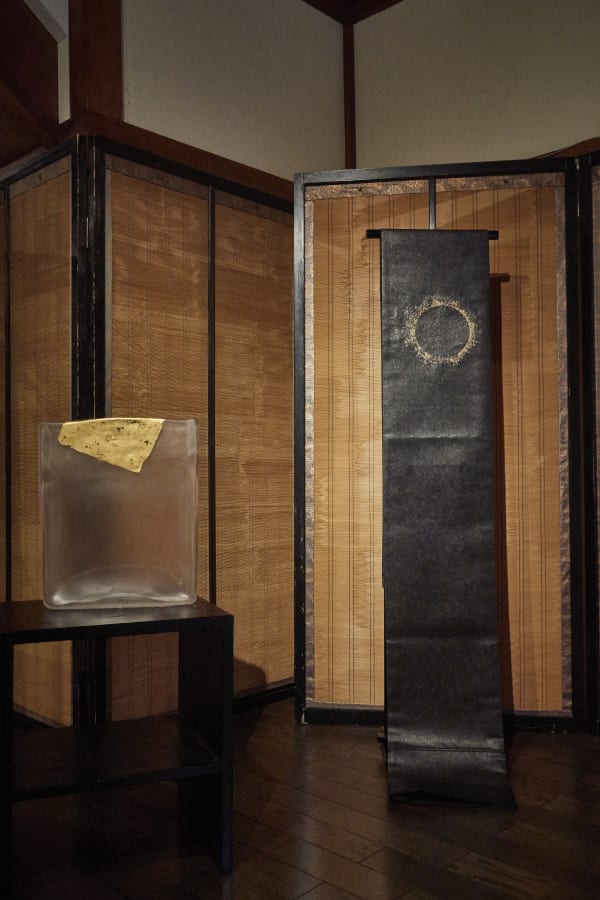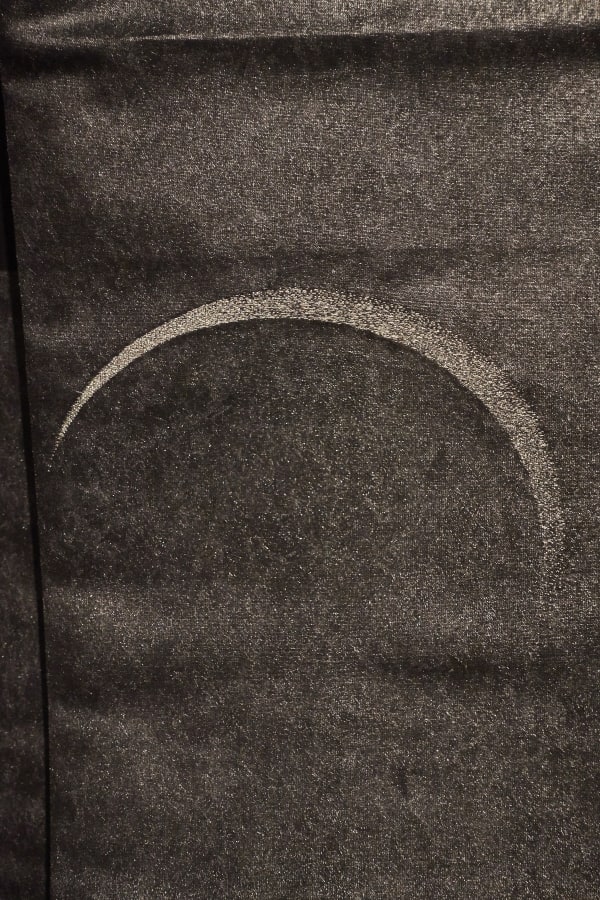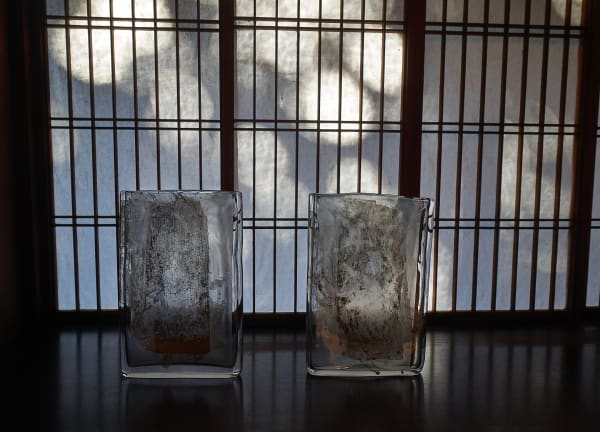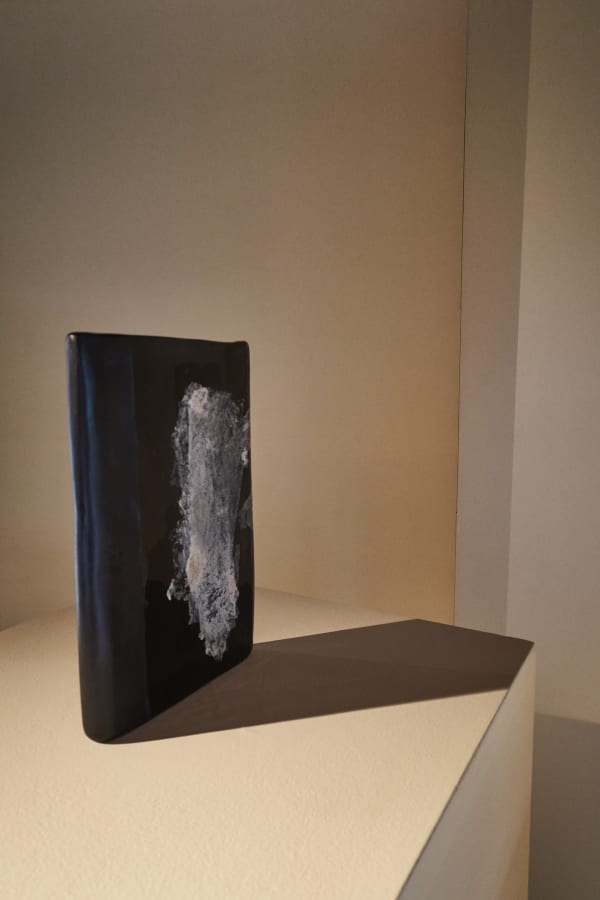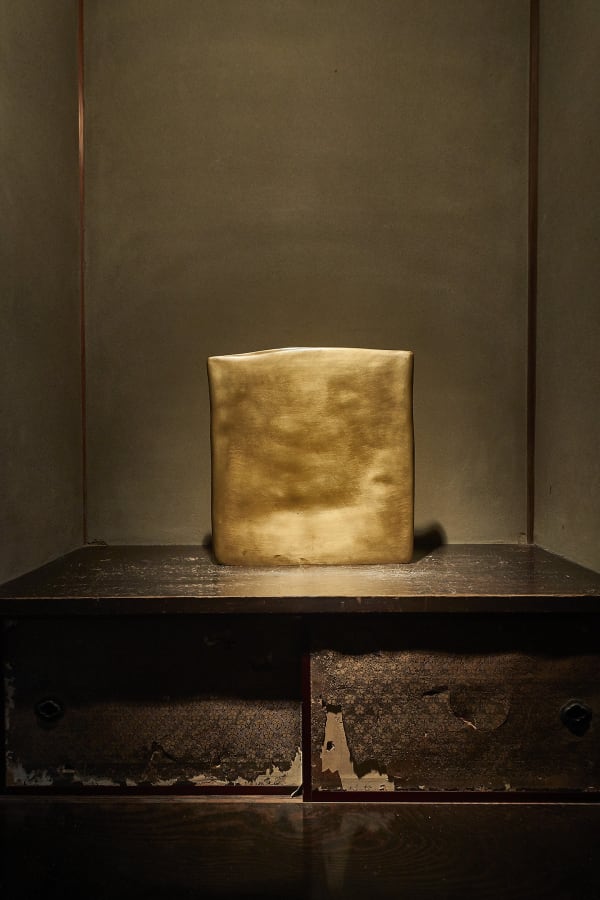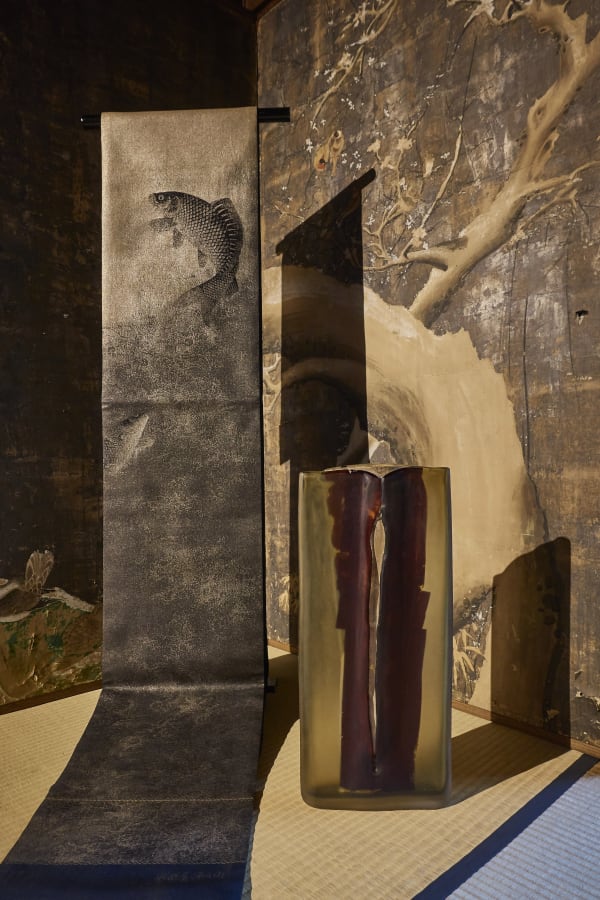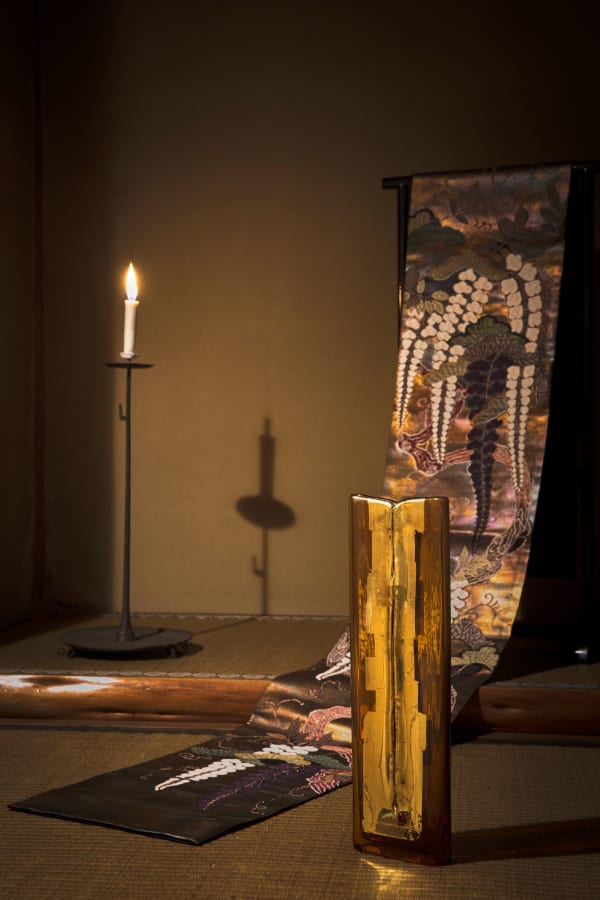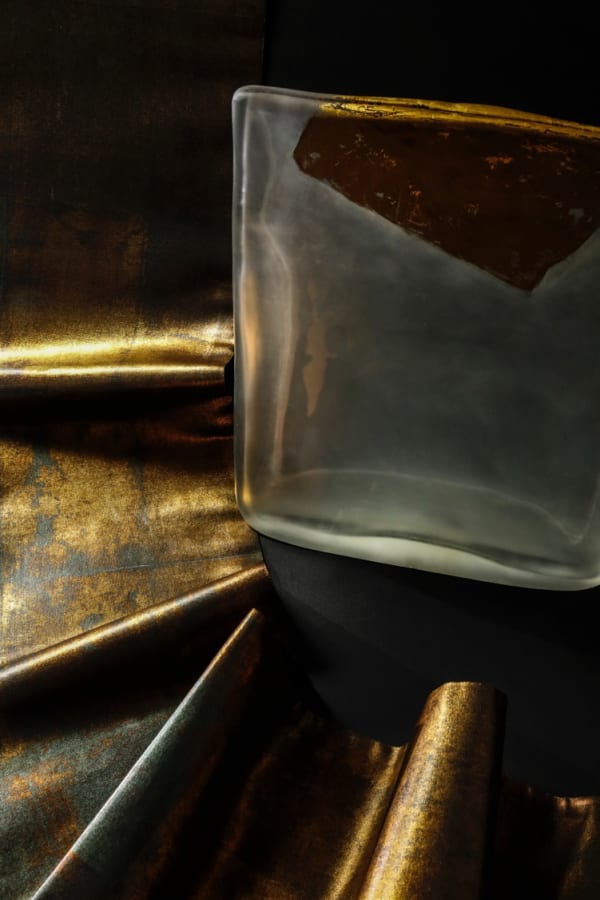Moon : Tsuki wo koso …: Kondaya Genbey x Laura de Santillana
Moon : Tsuki wo koso…
Genbey Yamaguchi, the tenth generation owner of the famous Kyoto obi specialist, Kondaya, is a rare breed of man. Kondaya has remained a leader in its field for 280 years, and Yamaguchi believes that challenging tradition is the best way to protect it. He therefore employs the skills and old materials passed down to him through the generations in his work. For instance, one of the most splendid obi created by Kondaya is woven from peacock’s feathers. It is said that even skillful artisan is only capable of making one during their lifetime. Kondaya also has produced obi saches with gorgeous decoration of mother-of-pearl and precious stones. By incorporating many new, mostly unheard of methods and materials, Yamaguchi redefines the notion of what is possible in Japanese textile making. He strives to pass down these techniques to bring these proud traditions within Japanese culture into the future.
In this exhibition celebrating their 280th anniversary, Kondaya will collaborate with a renowned Italian artist, Laura de Santillana. Yamaguchi hopes that they will ‘ make sparks fly ‘ together. Two contradictory materials – glass that allows light to pass through it, and textiles that reflect that light – create a mysterious harmony together.
De Santillana admires and is deeply commited to Japanese culture. In particular, her tablet glass series demonstares the true depth of her appreciation of Japanese – style expression. She presents her Moon series, with gold and silver leaf decoration, and her Bamboo series, whch she created in the Czech Republic.
Kondaya is eager to use extremely precious antique metal foils which have been preserved by his business for many years, to produce new obi sashes.
The theme of this special collaboration exhibition is a poem bu Kenreimonin that was written in from HeianPeriod ( 794 – 1185 ) :
Many a time have I gazed at the moon, But never so poignant did it seem,
As amid tonight’s star-strewn skies
The exhibition will be filled with romance and fantasy, allowing the audience to return to the origins of viewing things.
Many a time have I gazed at the moon
But never so poignant did it seem
As amid tonight’s star-strewn skies
Poem by Kenreimon-in Ukyō no Daibu (ca. 1157 – ca. 1233),
Japanese noblewoman, Heian Period (794 – 1185)
Ippodo Gallery is pleased to present an exhibition celebrating the mastery of renowned artist Laura de Santillana (b. 1955, Venice) alongside Genbey Yamaguchi, the 10th generation owner of the famous Kyoto obi (or kimono sash) atelier, Kondaya. This exclusive, deliberately fleeting installation marks the 280th anniversary of the exceptional Japanese design house (founded in 1738), interweaving hundreds of years of Japanese silk dyeing tradition with 30 breathtaking glass works.
From October 5 through 8, a beautiful interplay between light and fabric will invigorate the rich heritage of the Kondaya space in Kyoto, Japan.
The theme of gazing during this exibition was drawn from the beautiful poetry of Japanese noblewoman, Kenreimon-in, in a judiciously crafted translation. The word ‘gaze,’ when used for the natural world, is deemed as one of reflection and admiration. It is used for long observations and pensive moments, at once as a question and a celebration. In art history, the gaze has come to mean observation in a sociopolitical context, in an art viewing experience designed around referential lenses. As such, this contrast makes for a word that truly encompasses the collaborative exhibition on view, as cross-culturally provocative as it is serene.
The curated labyrinth is meant to both challenge and delight the viewer with its sense of discovery. Each room features another of de Santillana’s glass pieces from her Moon and Bamboo series. In gold and silver leaf, they sync with the architectural fluidity of the Kondaya space.
De Santillana has maintained a long and fruitful relationship with Ippodo gallery, likening Japan to her ‘spiritual home’. As the only non-Japanese artist, she has been invited to showcase time and time again because of her philosophy on beauty. At home in Venice, she maintains Japanese architectural and aesthetic elements, continuously drawing inspiration in East-Meets-West artistry.
De Santillana’s works are offset by the Kondaya obi belts in extremely precious oxidized gold and silver leaves preserved forgenerations, complementing the metals in the glass. One splendid obi by Kondaya is made from peacock’s feathers, while another is inlaid with mother-of-pearl and jewels. The fabrics shimmer resplendently, stunning without overwhelming the viewer. Their craftsmanship is unbounded: In the case of the peacock-woven obi, it is said that even a skillful artisan is able to produce only one piece per lifetime.
Traditional weaving techniques in koishimaru silk are kept alive through innovation, incorporating new methodology and unconventional materials to push the boundaries of textile artisanship. Genbey Yamaguchi held his first solo exhibition of obi at Kondaya in 1985 using precious materials, and expanded expertise into kimono experimentation beginning in 1999. In 2016, five obi and two kimono fabrics were acquisitioned by Victoria & Albert Museum in London.
While Laura de Santillana is a highly contemporary artist, her practice comes from generations of glassmakers on the Venetian island of Murano, followed by personal exploration of art and design around the world. With exhibitions throughout Japan with Ippodo, as well as in Europe, the United States and Israel, her works are in 24 museum collections across the United States, the United Kingdom, Germany, France, Switzerland, and Brazil. Among them are the Metropolitan Museum of Art in New York and the Victoria & Albert Museum, with extensive press and publication mentions as well. She studied at the School of Visual Arts in Manhattan.
Ultimately, this collaborative exhibition exemplifies the values of Ippodo Gallery. Unprecedented craftmanship cultivated through generations of appreciation and studious reflection culminate in harmony, with an intimate viewing experience for globally literate aficionados. The synchronicity of art and design is unparalleled, and an important step in the exchange of art and understanding between worlds.







